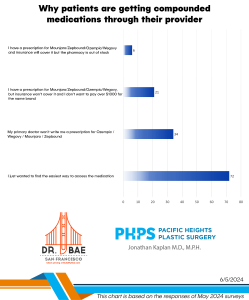In this recent article in the NY Times, the compound trichloracetic acid (TCA), often used for light chemical peels by doctors and aestheticians to resurface the face and minimize or remove very fine lines, is finding itself being labeled as a human carcinogen. “Recently the International Agency on Cancer Research moved to classify it as a suspected human carcinogen, and in July, the state of California followed suit, announcing its intent to add TCA to the state registry of toxic substances,” according to the NY Times article.
There has been evidence in animal studies in the past that the TCA chemical peel can cause certain types of liver cancer but this has never been conclusively proven in humans. In fact, the two agencies above can’t definitively prove a link with cancer in humans but their decision to list it as a human carcinogen is in an overabundance of caution and making sure consumers are aware of the possible link.

TCA peels are part of a family of chemical peels that rest in the spectrum between lighter salicylic or glycolic acid peels and the deeper phenol-croton oil peels. The lighter salicylic acid and glycolic acid peels are often found in home facial products such as Obagi’s Blue Peel Radiance and Exfoderm Forte, respectively. These help remove dead skin cells towards the surface of the skin, allowing fresh skin to shine through.
TCA peels are typically used in a doctor’s office or by an aesthetician in a doctor’s office to get a little deeper than just removing old dead cells but actually removing the layers of the epidermis and superficial layers of dermis. This strength of chemical peel literally peels away fine lines and wrinkles and can also remove dark spots and blemishes. One of the major benefits of the TCA chemical peel, aside from its ability to remove fine lines, is the reduced healing time. Usually a TCA peel results in facial skin peeling and redness that resolves over the course of several days with minimal social down time. But a quick recovery also means that the peel doesn’t penetrate very deeply into the skin and will not remove the more stubborn, deeper facial wrinkles that many have around their eyes and lips.

To remove the deeper facial lines and restore a more youthful, less worn appearance, you must resort to the deeper phenol-croton oil peel. Many may say that a laser resurfacing machine such as Fraxel or a more ablative CO2 laser will do the trick. Here, we need to recognize why lasers have gained more acceptance by patients. It’s not the results – they do not get as deep as a phenol croton oil peel and because they don’t go as deep, they do allow the patient to heal faster. This is the marketing advantage of lasers – they do allow you to heal faster than a deeper phenol-croton oil peel but that’s because they don’t go as deep and won’t as effectively treat your deeper wrinkles and lines.

So before you get a chemical peel of any kind, consult with a dermatologist or a board certified plastic surgeon.
Click here for the original blog post written by Dr. Jonathan Kaplan for BuildMyBod.?




